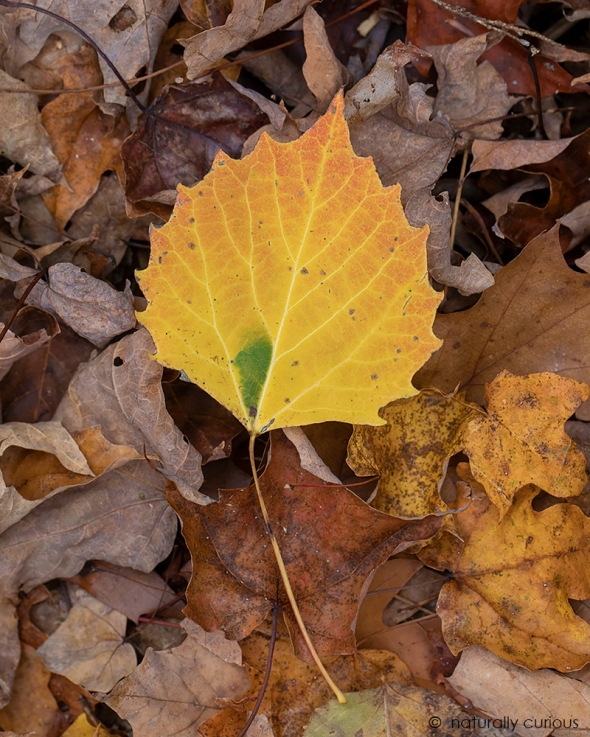Keeping A Dead Leaf Partly Alive
 If you look on the ground these days as yellow Trembling and Bigtooth Aspen leaves are falling, you may notice that small splotches of green remain in some of them. These chlorophyll-laden patches are usually found near the bottom of the midrib of the leaf. If you open the pocket of tissue at the base of the green section, it’s highly likely you will find a minuscule (2 mm long) translucent caterpillar (a microscope may be necessary to detect it).
If you look on the ground these days as yellow Trembling and Bigtooth Aspen leaves are falling, you may notice that small splotches of green remain in some of them. These chlorophyll-laden patches are usually found near the bottom of the midrib of the leaf. If you open the pocket of tissue at the base of the green section, it’s highly likely you will find a minuscule (2 mm long) translucent caterpillar (a microscope may be necessary to detect it).
The caterpillar (larva) first bores into the stem, or petiole, resulting in a swelling. When it reaches the leaf blade it makes an elongated blotch between the midrib and the first lateral vein. The larva is capable of secreting a chemical which prevents the natural deterioration of the leaf. As a result, chlorophyll is retained in this area and photosynthesis continues to take place, providing the larva with food. The leaf-mining larva (Ectoedemia sp.) will pupate over the winter (outside the leaf) and emerge next spring as a very tiny moth which will feed on the honeydew secreted by aphids. (Photo: Mined Bigtooth Aspen, Populus grandidentata, leaf)
Naturally Curious is supported by donations. If you choose to contribute, you may go to http://www.naturallycuriouswithmaryholland.wordpress.com and click on the yellow “donate” button.


















What Other Naturally Curious People Are Saying